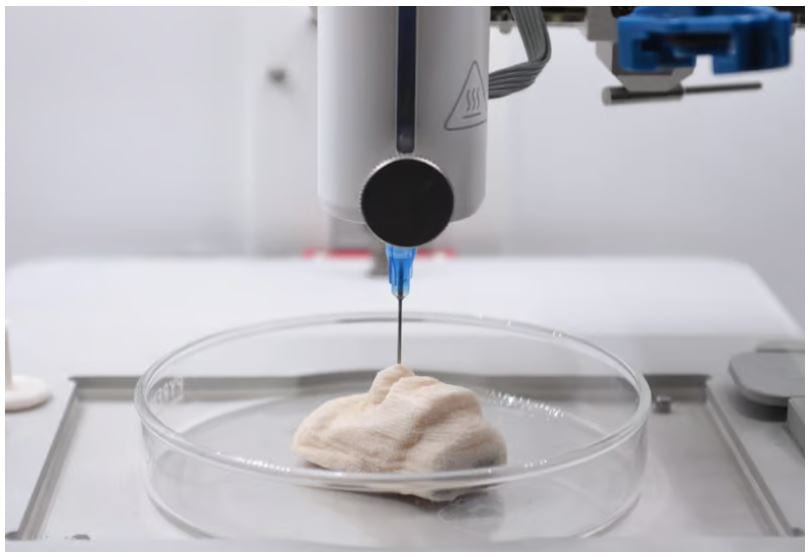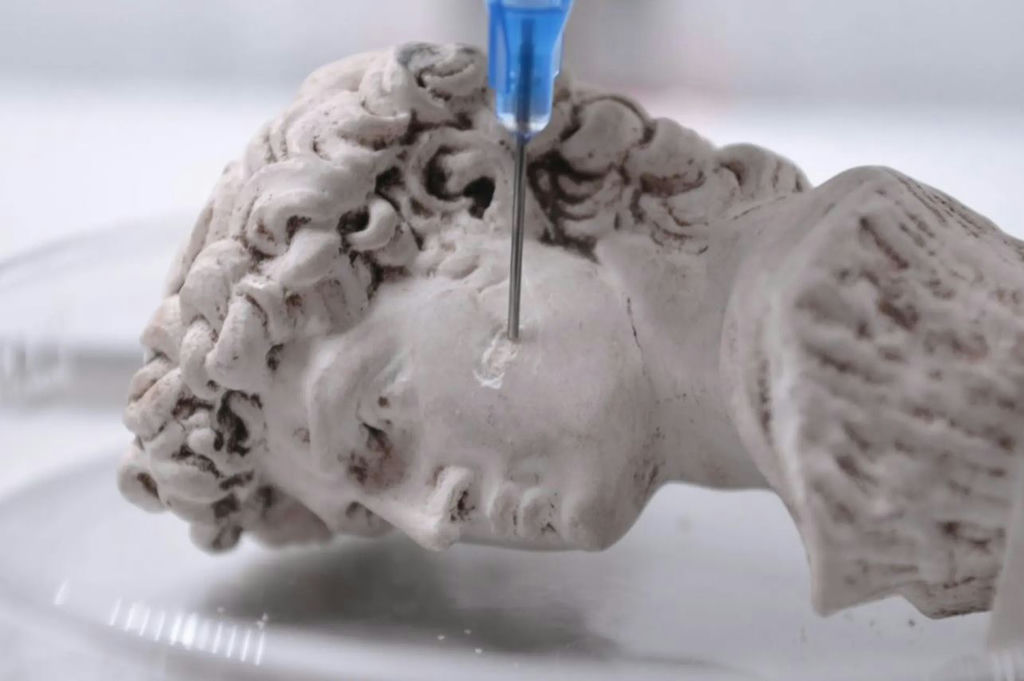Calcium carbonate is an impressive material, in that it combines strength, light weight and porosity. Scientists have devised a new bacteria-based method of 3D-printing the substance, for use in applications such as bone repair and coral reef restoration.
First of all, this isn’t the first time we’ve heard about the 3D-printing of calcium carbonate objects.
Earlier approaches have involved extruding a gel containing mineral particles, which subsequently dries and hardens. Some of the resulting items have been rather soft and fragile, however, or they’ve shrunk as they dried, creating cracks and causing their shape to change.
Seeking a better alternative, scientists at Switzerland’s EPFL research institute combined a bacterium called Sporosarcina pasteurii with an eco-friendly polymer gel. Known as BactoInk, the resulting mixture gets extruded into the desired shape, forming a gelatinous object with a scaffolding-like three-dimensional microstructure in which the bacteria “roost.”
Next, the object is exposed to a urea-containing solution. This causes the bacteria to produce hard calcium carbonate, which ultimately replaces the soft gel. Finally, the item is submerged in an ethanol solution, killing the bacteria.

In lab tests performed so far, finished products with a calcium carbonate content of over 90% were created in “about four days.” Both figures should likely improve as the technology is developed further.
It is hoped that the material could one day be used in the production of artificial coral, which would be populated by coral polyps and thus transformed into “real” coral once placed in a damaged reef. The material might also be extruded directly into injuries where bone is missing, forming new bone to fill the void. And in yet another suggested application, the material might be used to repair damaged pieces of art such as statues.
“The versatility of the BactoInk processing, combined with the low environmental impact and excellent mechanical properties of the mineralized materials, opens up many new possibilities for fabricating lightweight, load-bearing composites that are more akin to natural materials than to today’s synthetic composites,” said Assoc. Prof. Esther Amstad, who led the research along with Matteo Hirsch, Lorenzo Lucherini, Ran Zhao and Alexandra Clarà Saracho.
Subscribe to AM Chronicle Newsletter to stay connected: https://bit.ly/3fBZ1mP
Follow us on LinkedIn: https://bit.ly/3IjhrFq
Visit for more interesting content on additive manufacturing: https://amchronicle.com


